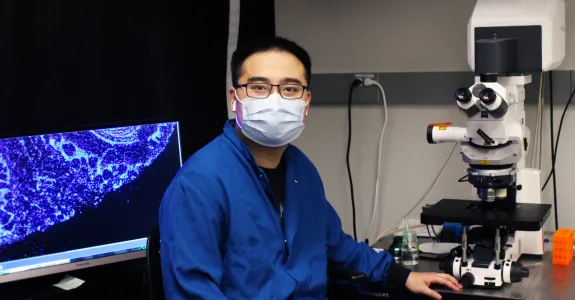
In some circumstances, the eukaryotic cell cycle can be best described as a succession of contingent events. For example, in most somatic cells in culture, cell growth is followed by DNA replication, then more cell growth, then mitotic entry and chromosome congression, then sister chromatid separation and mitotic exit. The transitions from one cell cycle phase to the next are generally all-or-none in character and irreversible. The Ferrell lab's goal is to understand how these irreversible switches between phases occur.
In other contexts the cell cycle is better described as an autonomous oscillation. For example, in the early Xenopus embryo, every ~30 minutes CDK1 is activated and this reliable rhythm is maintained even if DNA replication or mitosis is blocked. The lab's goal is to understand how this oscillator works.
The approaches they have taken to these questions include quantitative experimental approaches, computational modeling, and the theory of nonlinear dynamics. The Ferrell lab hopes to understand the design principles of these systems, and perhaps to gain insight into other biological switches and oscillators as well.



